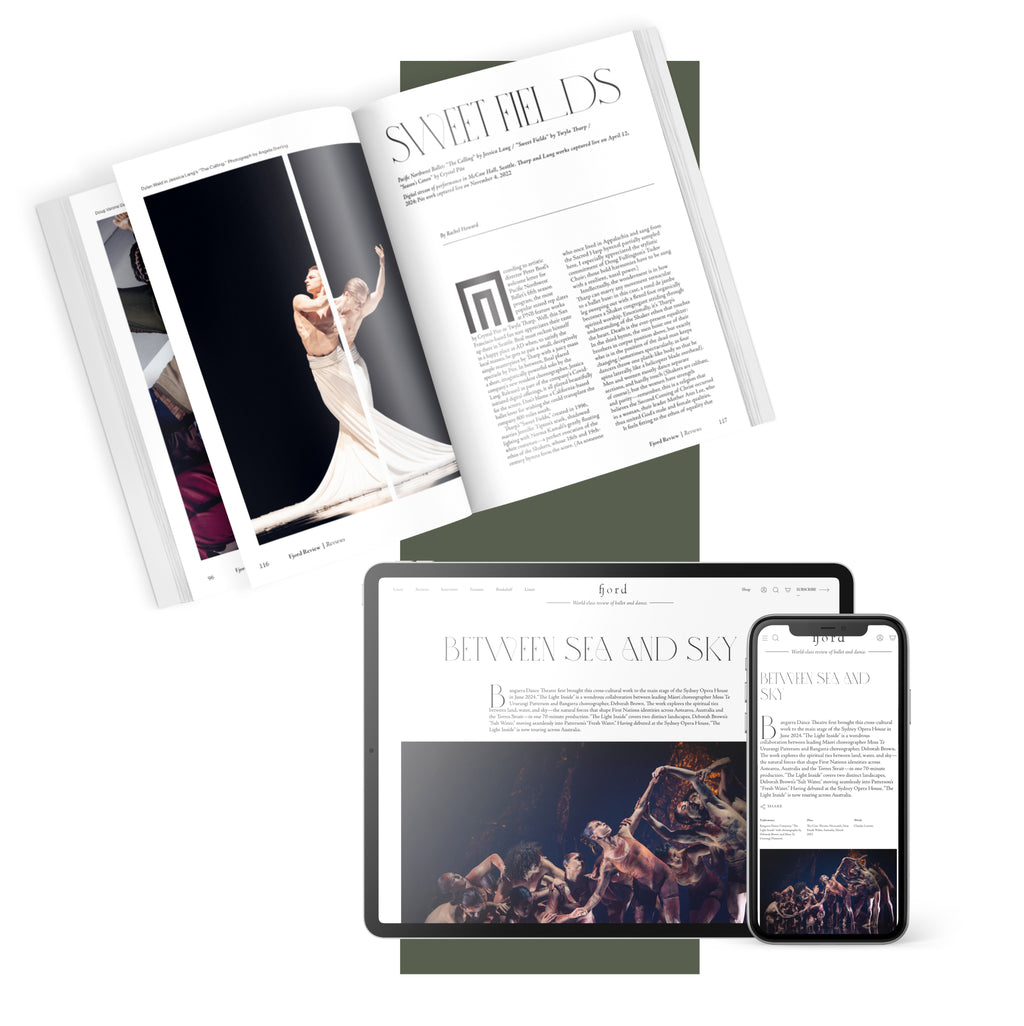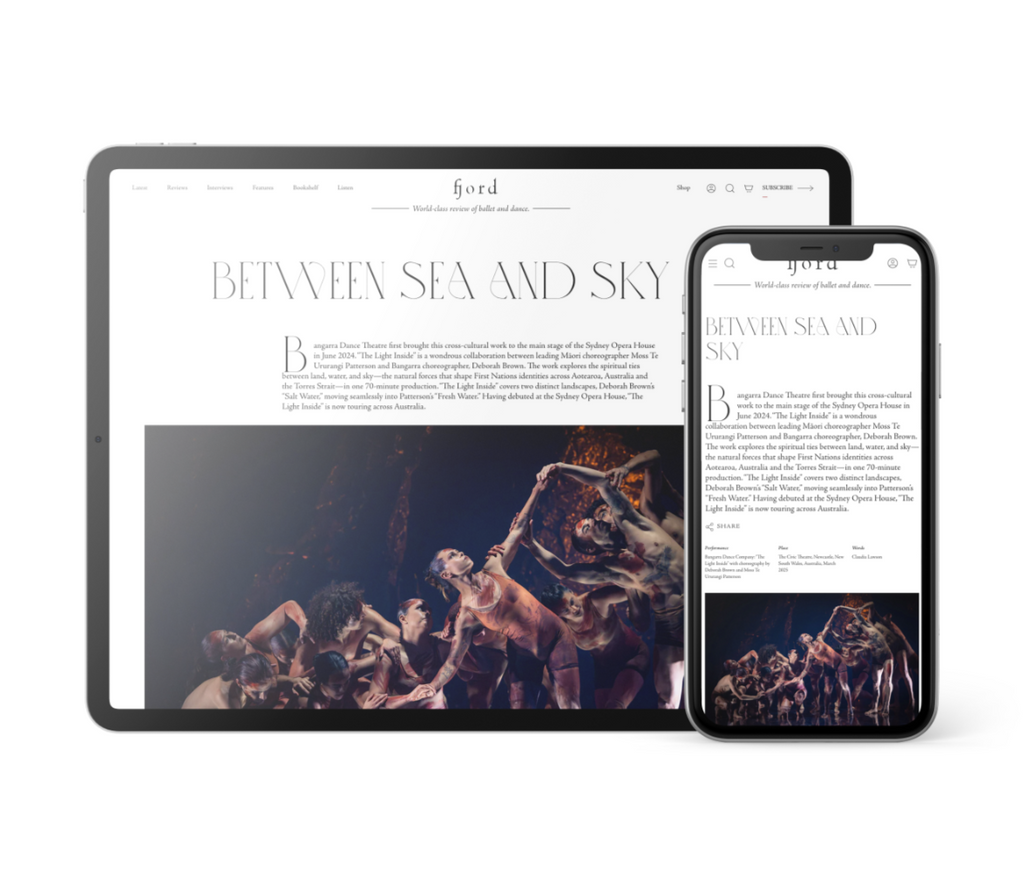In “Woolgathering,” the performance, Smith's words alone enliven the sparse stage with flashbacks, images of childhood fantasy and amazement.
Nairne and Casel's duet further evokes Smith's almost mystic stories through mime and gentle partnering. They lean their heads together when seated, rise, clasp hands, and waltz through each other's arms. They pull extended fingers out of their mouths as if to test the wind, then shake, morphing cries into laughter.
Soon, Smith tells of the “woolgatherers,” the people who worked in the neighboring fields of Smith's childhood home and whom she came to view as kinds of spirits. As a child, she would picture them as she fell asleep: “I wandered among them, through thistle and thorn, with no task more exceptional than to rescue a fleeting thought, as a tuft of wool, from the comb of the wind.”
Heginbotham's dancers make use of Smith's movement direction, “wandering” and “gliding” around the centered Smith. Sometimes, the dancers take on non-human imagery: In one striking moment, Casel is seated downstage and Nairne is extended perpendicular to him on his lap. Casel rolls Nairne to him vigorously as she tumbles atop him like spinning wool.
Most of the time, however, the dancing attends to Smith's more sensitive personal experiences, with the dancers' portraying a childlike relationship. The very last lines Smith speaks from her book refer to her own siblings and reveal the relationship created by Casel and Nairne: “It was a communion bred of love and innocence.”












comments